New Video Recounts the 3,000-Mile Trek by Brazilian Members from Manaus to Sao Paulo
Contributed By R. Scott Lloyd, Church News staff writer
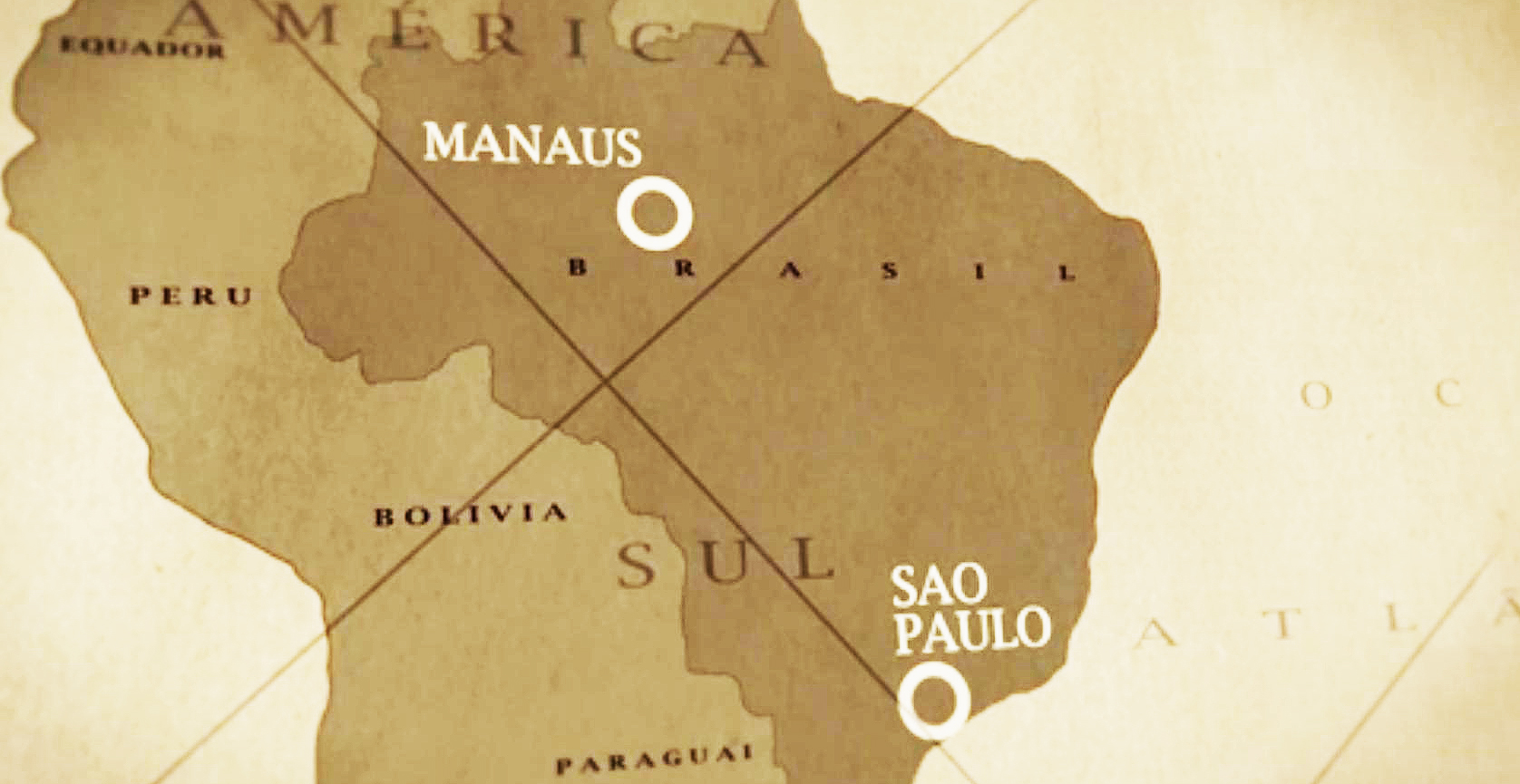
Map in video shows distance between Manaus and Sao Paulo, some 3,000 miles, that Church members had to travel to attend the temple.
Article Highlights
- The Church History Department created a new video relating the pioneer trek of Brazilian members in Manaus by riverboat to the temple in São Paulo, 3,000 miles away.
- They traveled three days by boat up the Amazon and Medeira Rivers and three days by bus.
- A replica of the boat used was created for the celebration of the Manaus Temple dedication.
“I was on that boat. I felt like yelling, ‘I was there! I was there!’ It was then that I realized that I was a pioneer.” —Rosineia Viana of Manaus, Brazil.
A large, bustling city, Manaus, Brazil, is also isolated, surrounded by the largest tropical rain forest in the world.
“For members of the Church in Manaus, it is a blessing to live in such a beautiful place, but it was also a challenge to build up the Church in an area so far away from other members,” says a narrator in a new video now accessible on the Church’s website.
Part of the challenge in the 1990s was that the nearest temple was in São Paulo, some 3,000 miles away—farther than the distance between New York City and Los Angeles in the United States.
“What we’ve done with the video,” said Matthew McBride, content manager with the Church History Department, “is a historical treatment of what we feel is a very significant event in the history of the Church in Brazil.”
That event was the undertaking by Church members of what at the time was almost unthinkable: a trek by riverboat and bus to Brazil’s capital city where the Manaus Saints could receive their temple blessings.
It was common for members in other stakes in Brazil to travel as groups to the temple in São Paulo, but none had so far to go. Moreover, there were no good roads connecting Manaus with other cities, and most of the transportation was by boat along routes that weren’t well mapped at the time, Brother McBride explained. “This led Church members to believe that they couldn’t caravan to the temple, as members in other stakes and other parts of the world had done.”
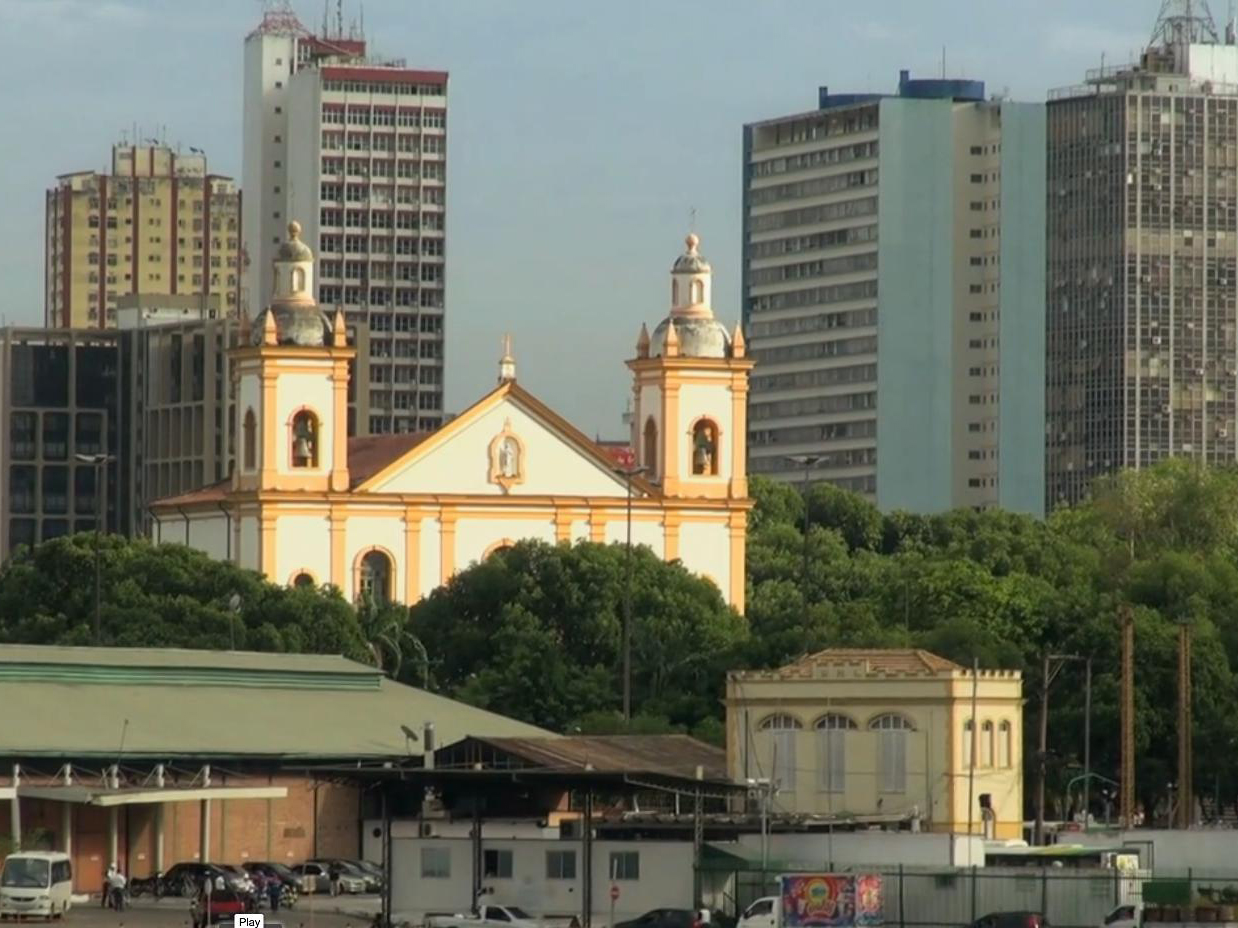
Cityscape of Manaus, Brazil, a thriving city in an isolated area of the country, where Saints in the early 1990s had to journey 3,000 miles to attend the temple in Sao Paulo.
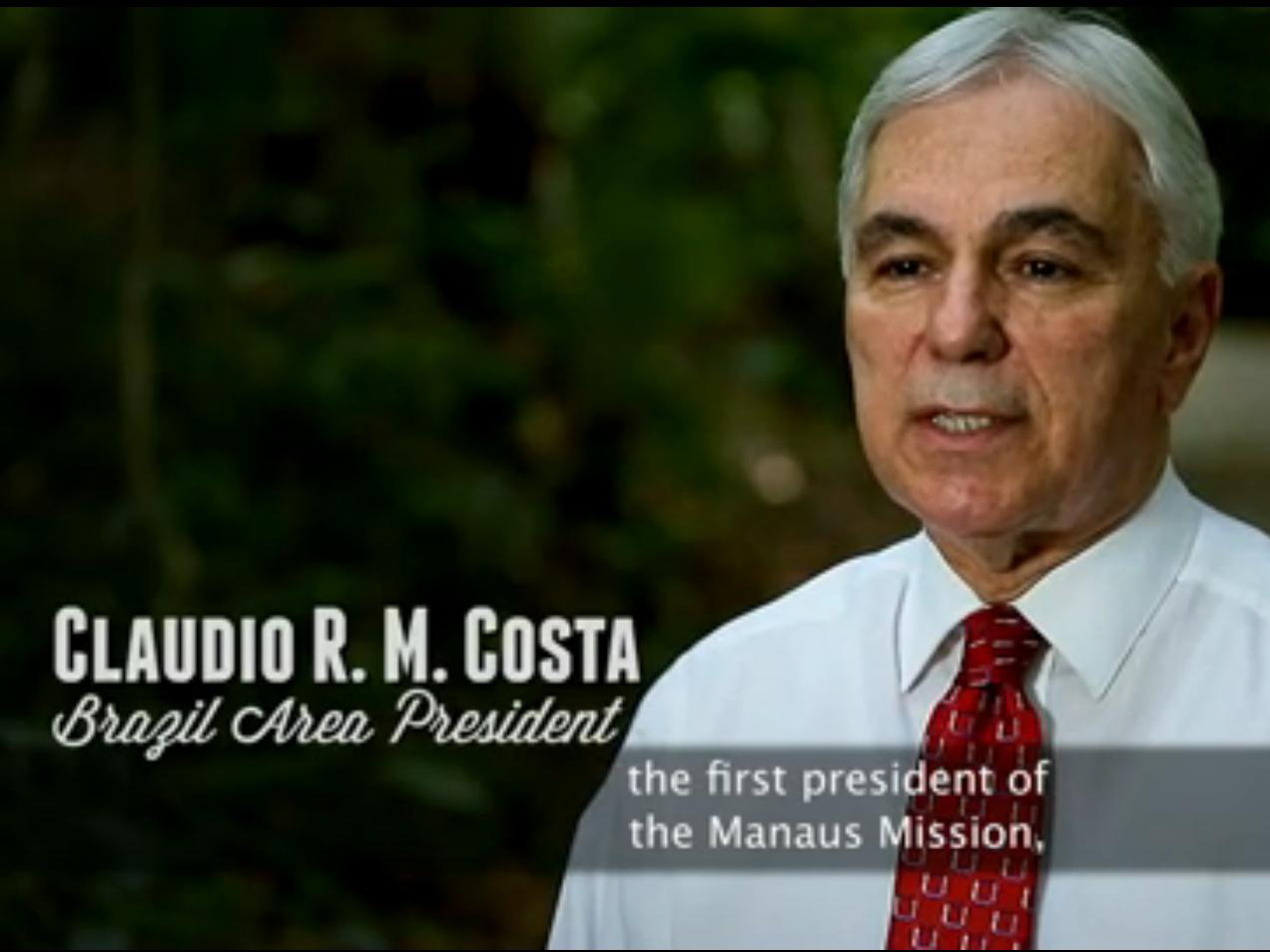
Elder Claudio R. M. Costa, now Brazil Area President, recounts the sacrifice and determination of Manaus Saints to undertake a 3,000-mile journey to attend the temple in Sao Paulo.
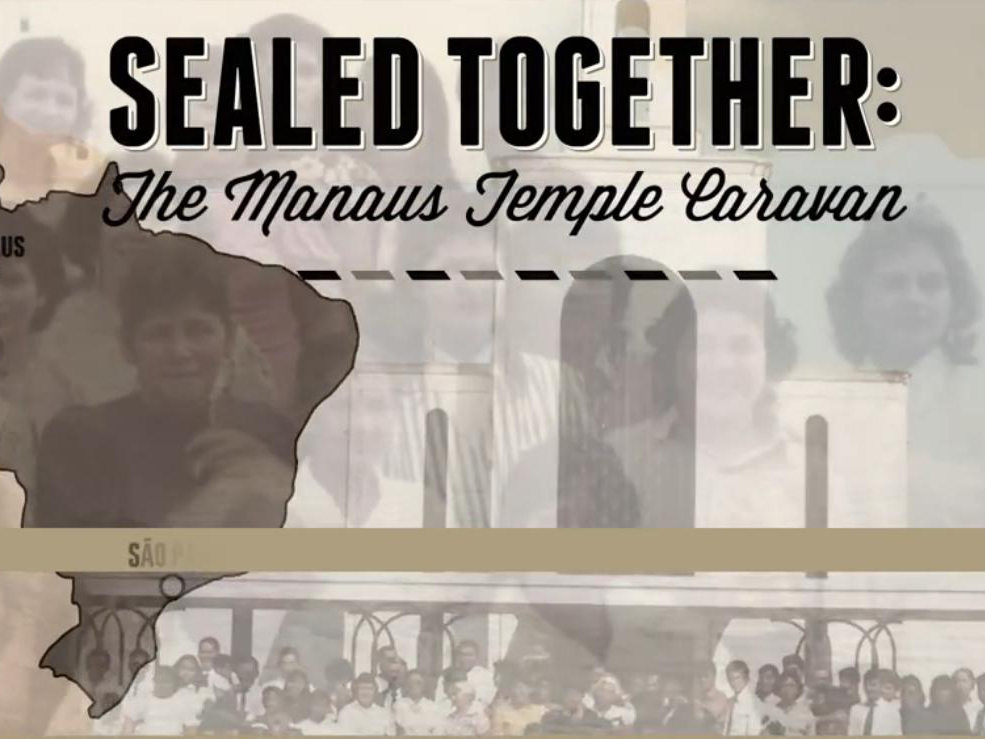
Opening title of new Church video, “Sealed Together,” recounting a 3,000-mile caravan of Latter-day Saints from Manaus, Brazil, to the temple in Sao Paulo.

Aerial view of the river in Amazonas state in Brazil, where Manaus is located, is part of a new Church video, “Sealed Together.”
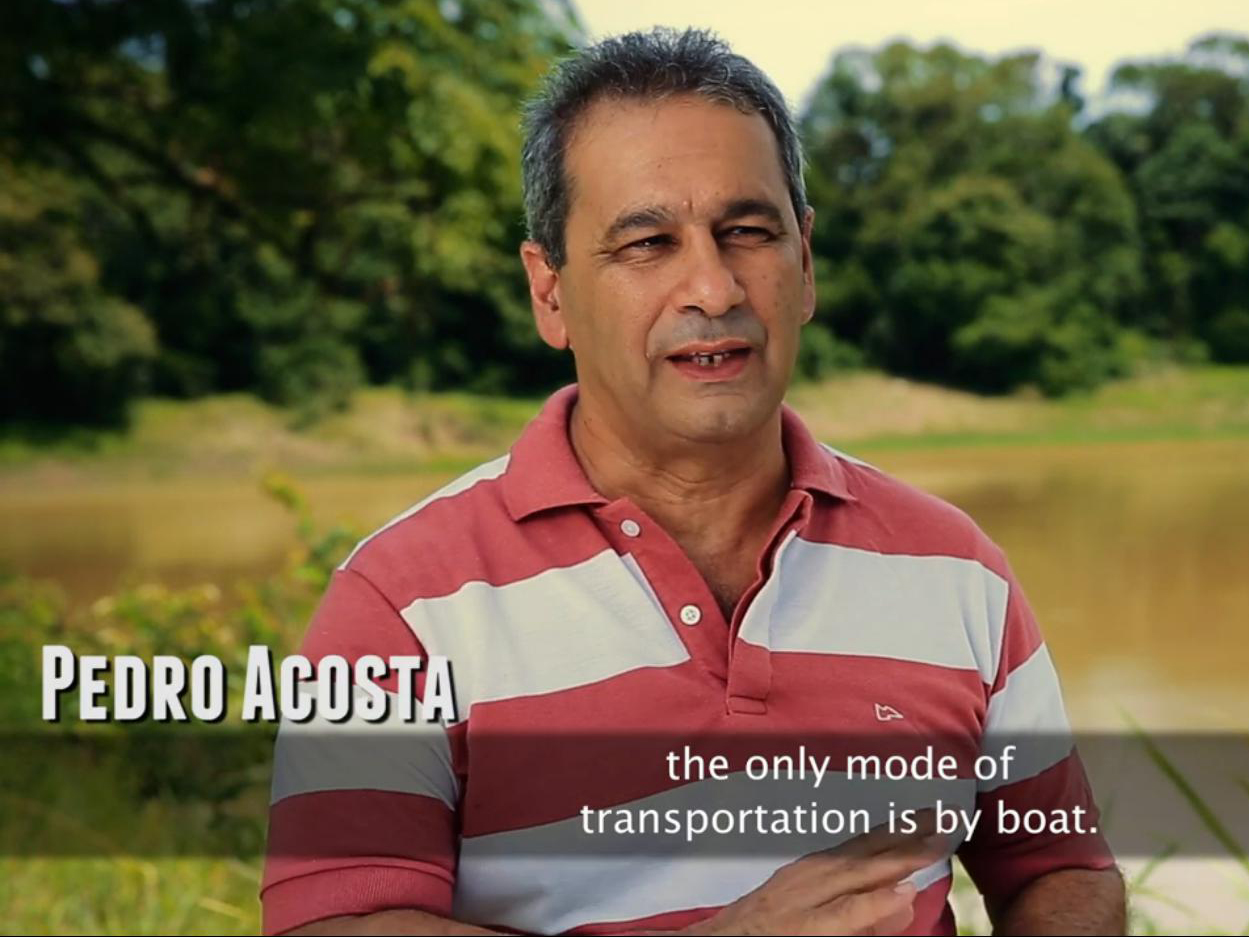
Pedro Acosta, who organized a 3,000-mile caravan from Manaus to the temple in Sao Paulo, recounted memories in a new Church video, “Sealed Together.”
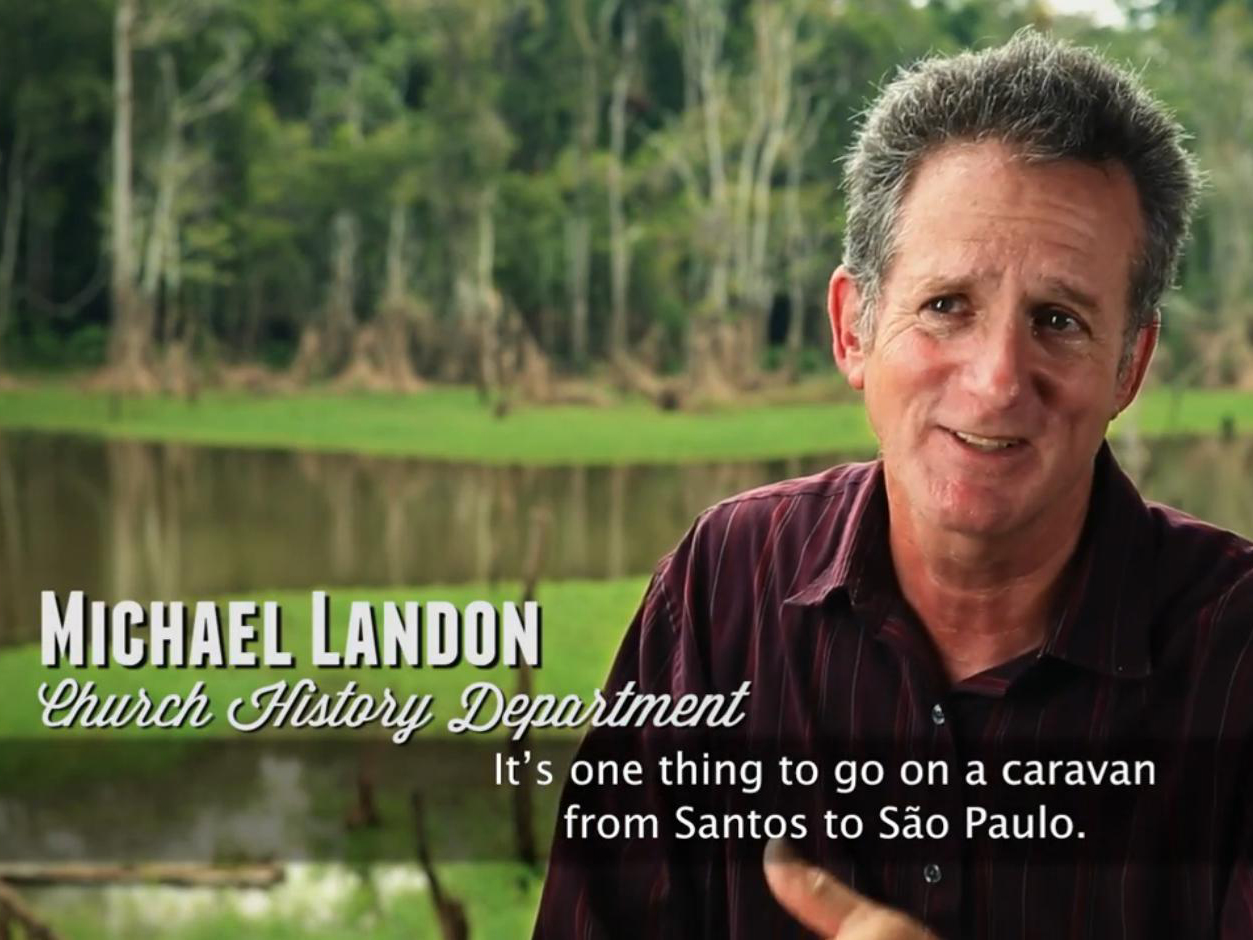
Michael Landon of the Church History Department, who was involved in the making of a new Church video, “Sealed Together,” explains what a sacrifice it would be for the Manaus Saints to go 3,000 miles to attend the temple in Sao Paulo.
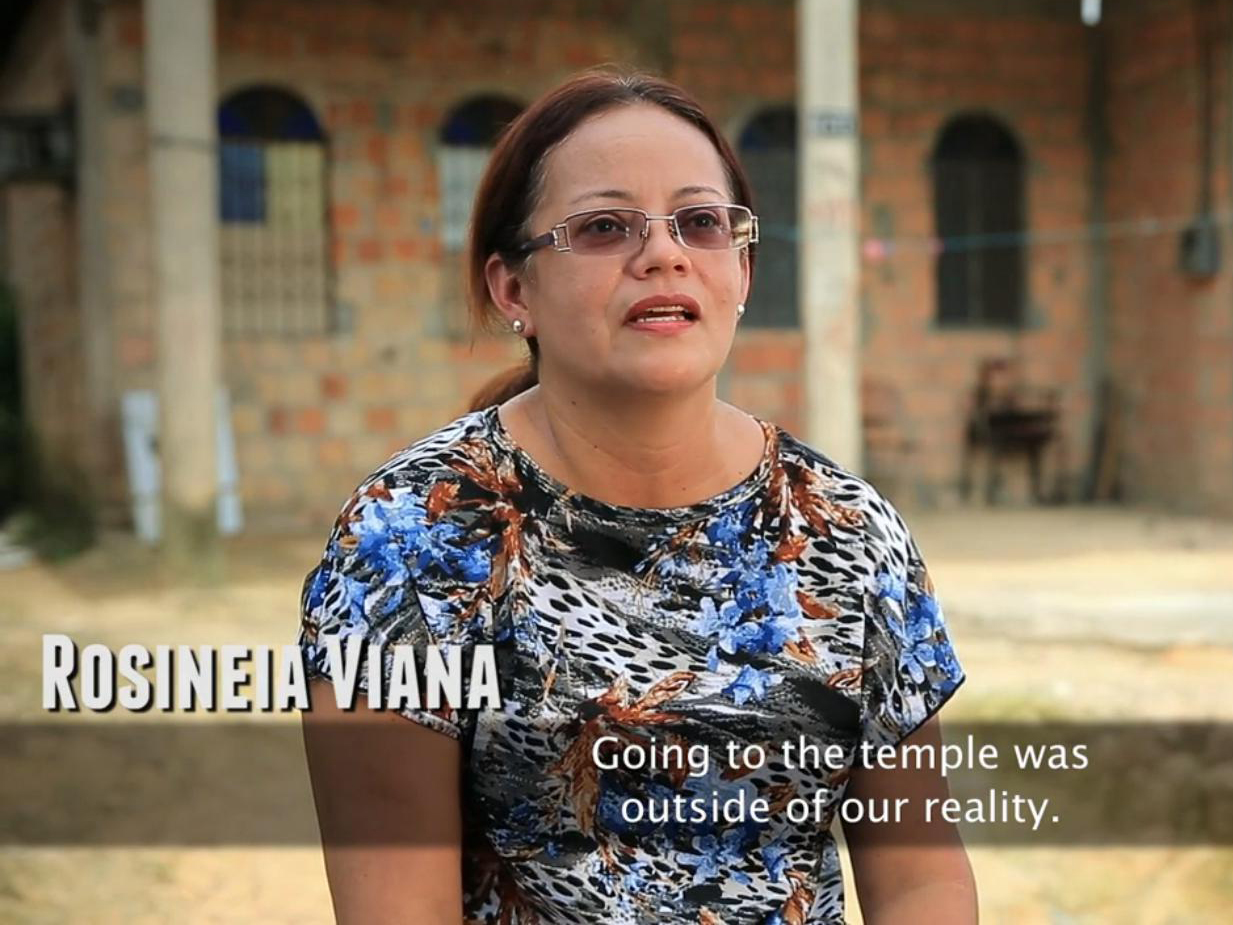
Rosineia Viana gives her memories of being on a caravan from Manaus to the temple in Sao Paulo in a scene in a new video, “Sealed Together.”
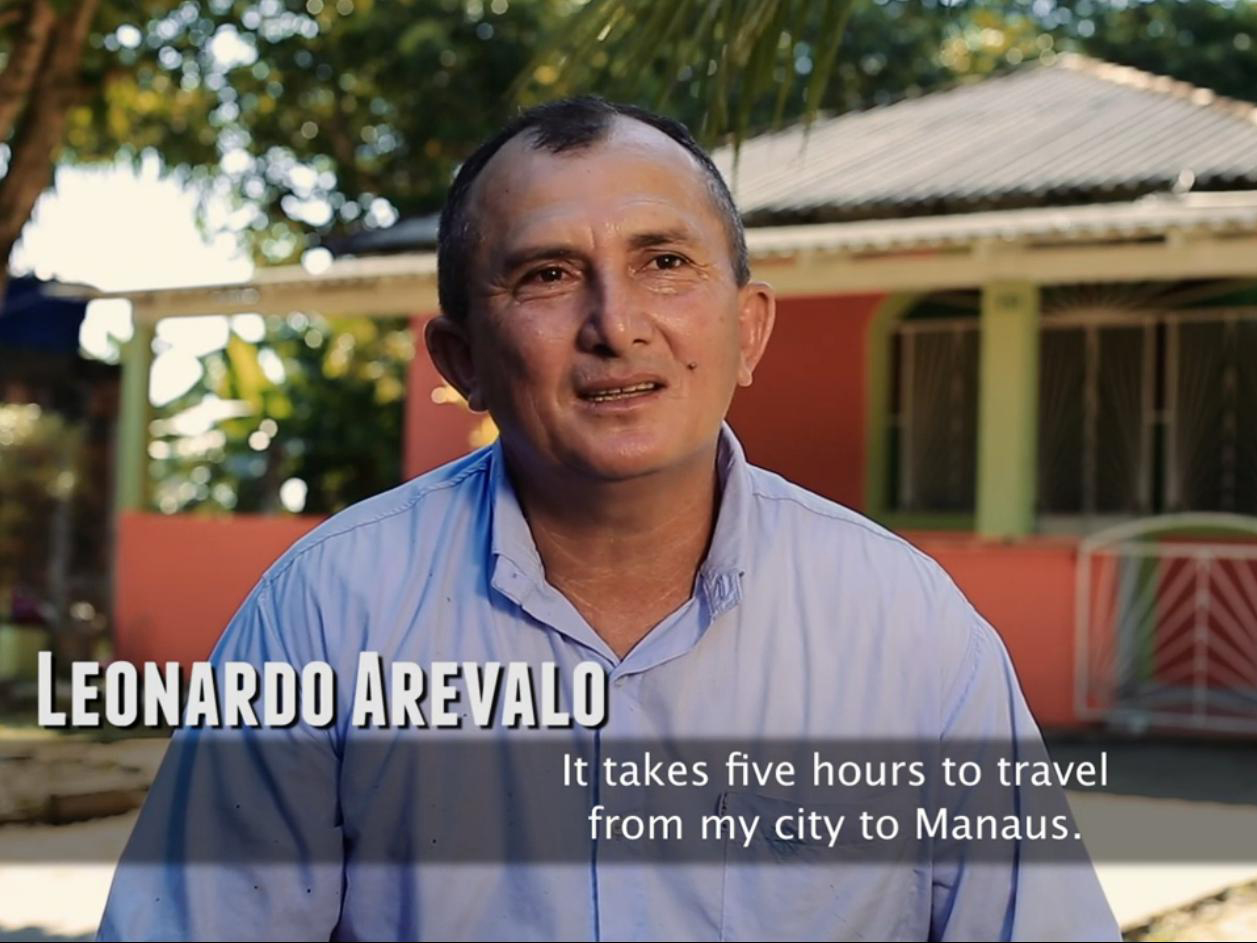
Leonardo Arevalo gives his memories of being on a caravan from Manaus to the temple in Sao Paulo in a scene in a new video, “Sealed Together.” He had to travel five hours from his house just to get to Manaus to undertake the 3,000-mile journey.
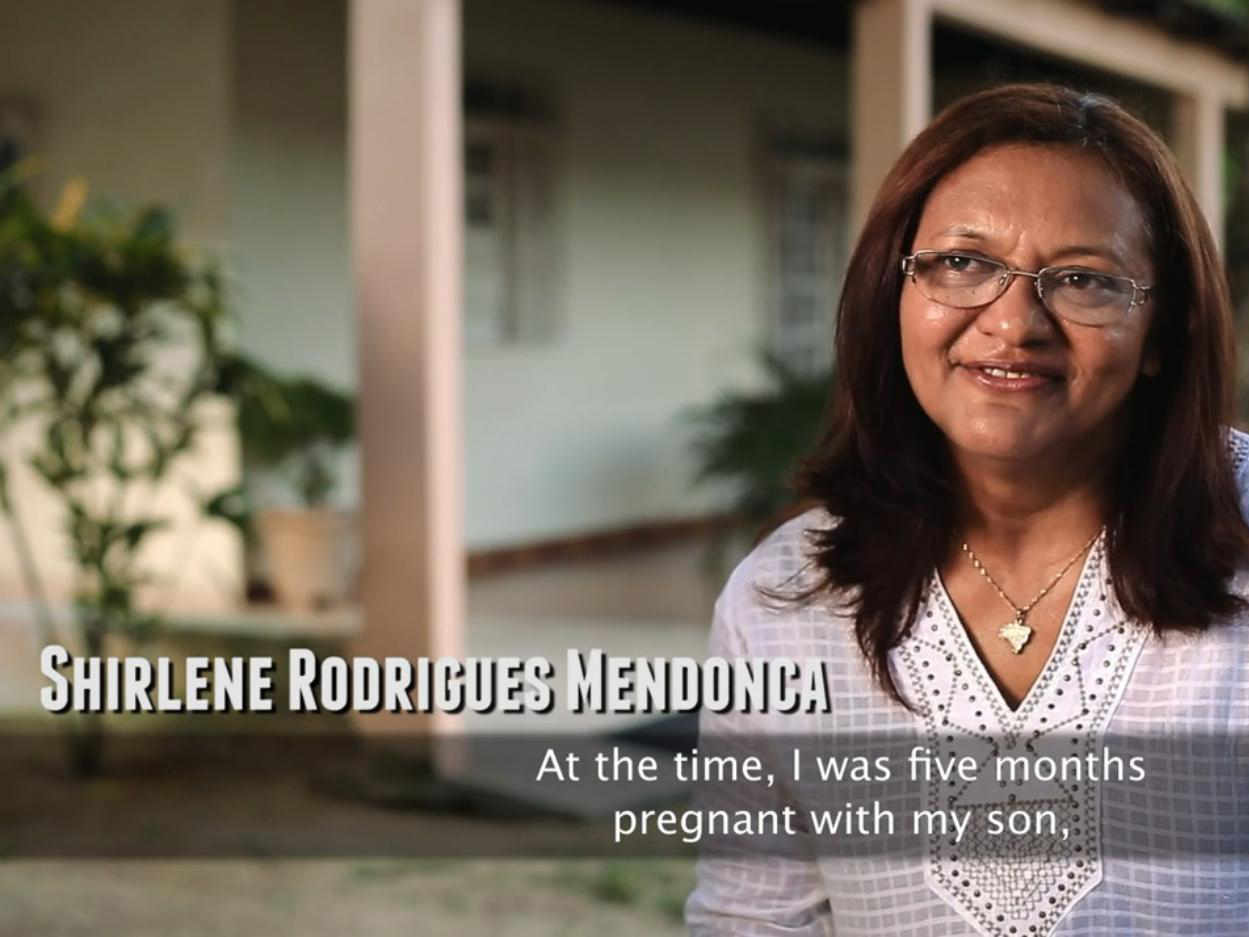
Shirlene Rodrigues Mendonca gives her memories of being on a caravan from Manaus to the temple in Sao Paulo in a scene in a new video, “Sealed Together.”

Photo taken during a caravan of Manaus Saints to the Sao Paulo Brazil Temple 3,000 miles away is included in a new video, “Sealed Together.”
Elder Claudio R. M. Costa of the Seventy, Brazil Area President, is featured in the video.
“In 1990, when I was called to be the first president of the Manaus Mission,” he recounts, “we had such pure and wonderful Church members, but they had very little leadership experience and didn’t know how things should be done on a large scale.”
Pedro Acosta, a local Church member, explains on the video, “The idea of a caravan leaving from Manaus and going to São Paulo started forming in my head, a caravan capable of taking everyone.”
He spent his evenings in research and study until he was ready to show his plans to President Costa and to President Wilson Santiago of the Manaus stake.
Elder Costa explains, “They simply began to make plans and had some leaders with vision, like [stake] President Wilson Santiago and Pedro Acosta and his wife, Glicia. This began to create a vision of what we could become in Manaus. It was no longer a vision of who we were, but the vision of who we could become.”
Setting out on November 25, 1992, the members from the stake undertook the journey in two segments: three days by boat up the Amazon and Medeira Rivers and another three days by bus along roads so bumpy that at one point in the journey, the windshield of the bus fell out.
This and other occurrences along the journey are recounted in the video through depictions and through recollections by some of the Church members who were part of the journey.
Church members had brought 20 large containers of water for the river journey, thinking it would last until they came to the next city. Unexpectedly, it ran out.
President Santiago gathered the members together for a prayer. Thereafter, clouds gathered, and rain poured down heavily for 15 minutes, long enough for the boat passengers to fill pans, pots, buckets, and other containers with more than enough water for them to make it to the next city.
Besides giving them the water they needed, the experience dispelled their fears, giving them confidence that God would watch over them for the rest of the journey.
Brother McBride said filmmaker Alex Dantas, a Church employee in Brazil, reenacted the miracle in the video onboard the same kind of boat the members took for the 1992 journey.
Going below deck, Brother Dantas enlisted the help of passengers—none of whom were members of the Church—to serve as extras for the filming while the scene was enacted with the use of fire hoses to simulate rain.
This first temple caravan from Manaus paved the way for other such ventures until 2012, when a temple was dedicated in the city.
“When we returned, others felt encouraged to go to the temple,” recalls Rosineia Viana in the video. “There were many who hadn’t made the trip due to fear of the journey of the unknown.”
Elder Costa adds that when the caravan members returned, “they had a different light about them. They had a joy, a happiness, something that radiated from their spirits, a feeling of being close to God. I knew that from that point on, Manaus would flourish.”
Giselle Mendoca Santos on the video shares her childhood memories of being on the caravan.
“My children know well the story of that caravan,” she says, “the story of their grandparents and my story too, because I was with them on that caravan.”
Sister Viana recounts in the video her experience attending the cultural celebration held in connection with the dedication of the temple in Manaus.
“We didn’t know what was planned for the celebration, only that they would portray our indigenous culture,” she says. But toward the end of the show, a replica of a boat came into the arena where the show was staged.
“I knew what it represented,” Sister Viana said. “I was on that boat. I felt like yelling, ‘I was there! I was there!’ It was then that I realized that I was a pioneer.”
The video is part of the “Pioneers in Every Land” series featured on the Church History section of the Church’s website and may be accessed at history.ChurchofJesusChrist.orghere.

Scene in a new video, “Sealed Together,” depicts a moment on a boat when Manaus Saints traveling to the Sao Paulo Brazil Temple were blessed with rain after their water supply onboard had been depleted.
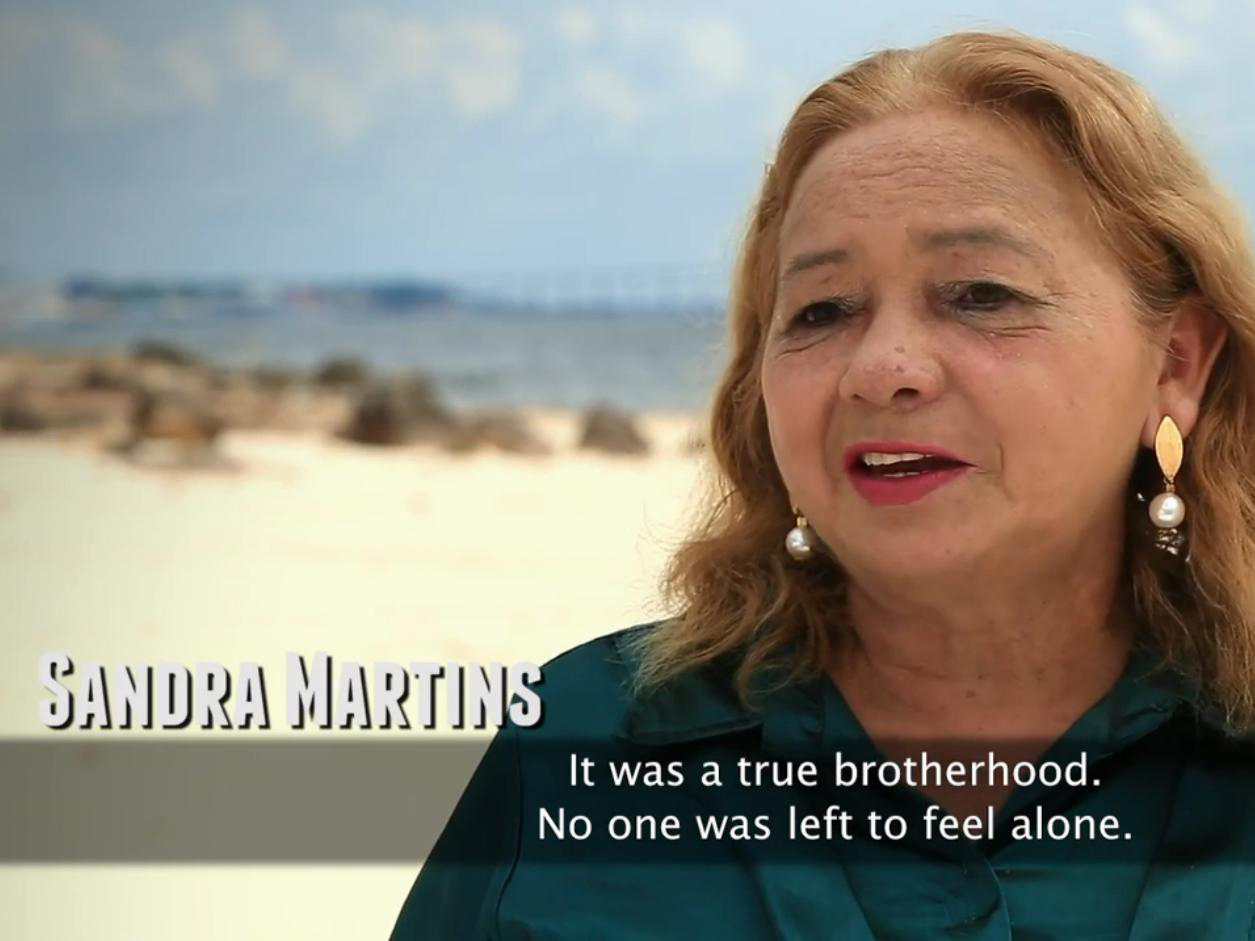
In a scene in a new video, “Sealed Together,” Sandra Martins gives her memories of being on a caravan from Manaus to the temple in Sao Paulo.
.jpg)
The journey by boat along part of the way to the Sao Paulo Brazil Temple from Manaus is depicted in the video “Sealed Together.”
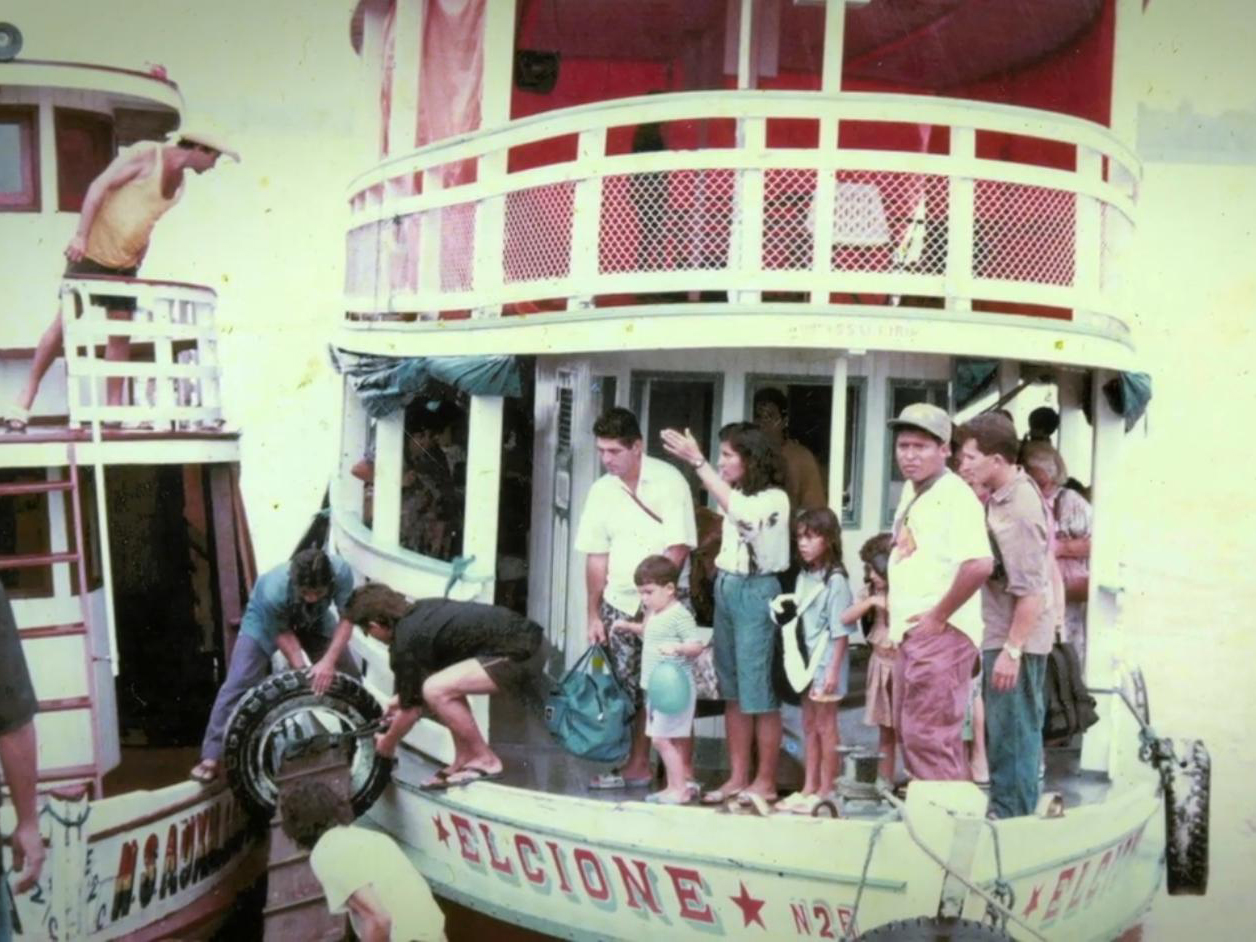
The journey by boat along part of the way to the Sao Paulo Brazil Temple from Manaus is depicted in the video “Sealed Together.”
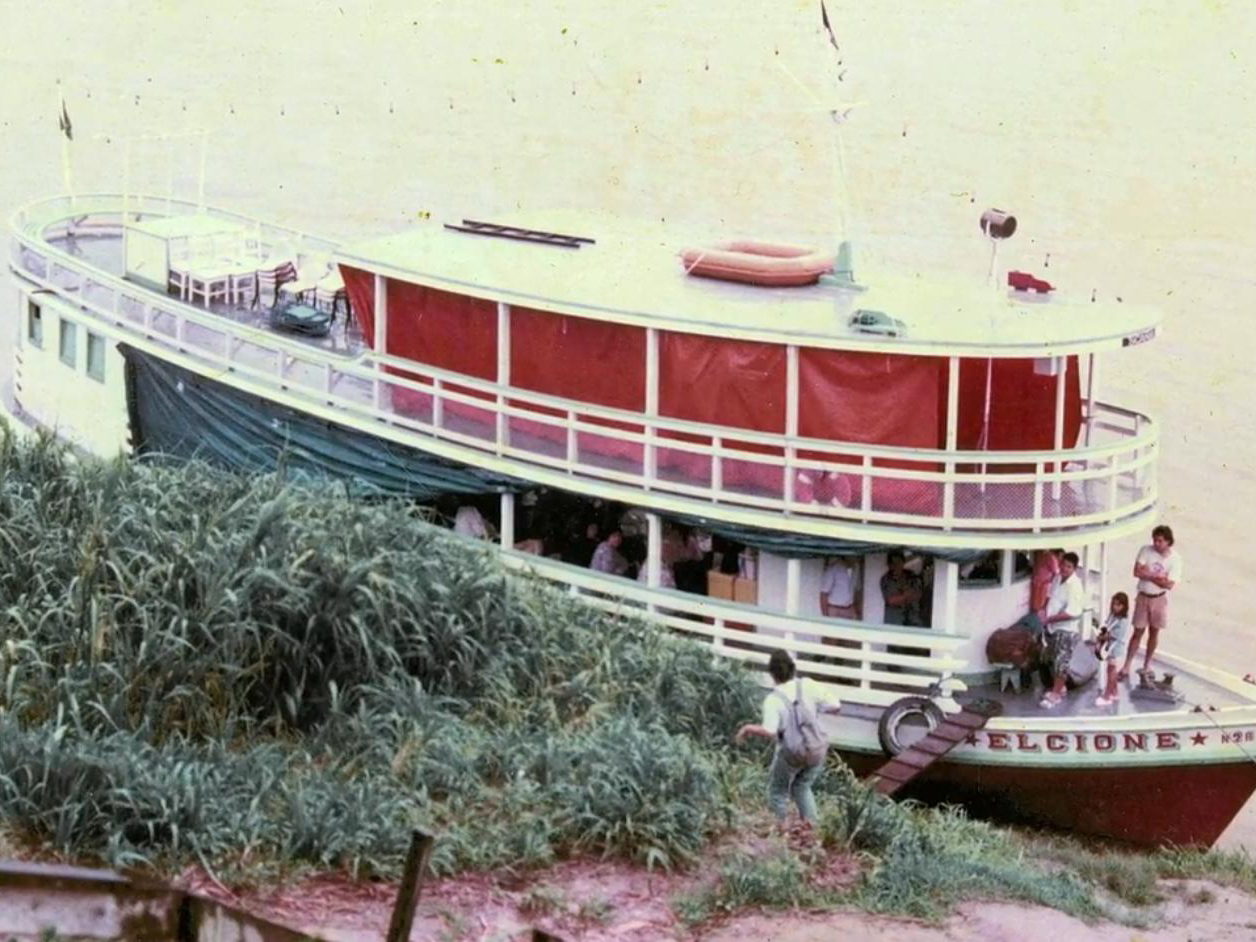
The journey by boat along part of the way to the Sao Paulo Brazil Temple from Manaus is depicted in the video “Sealed Together.”
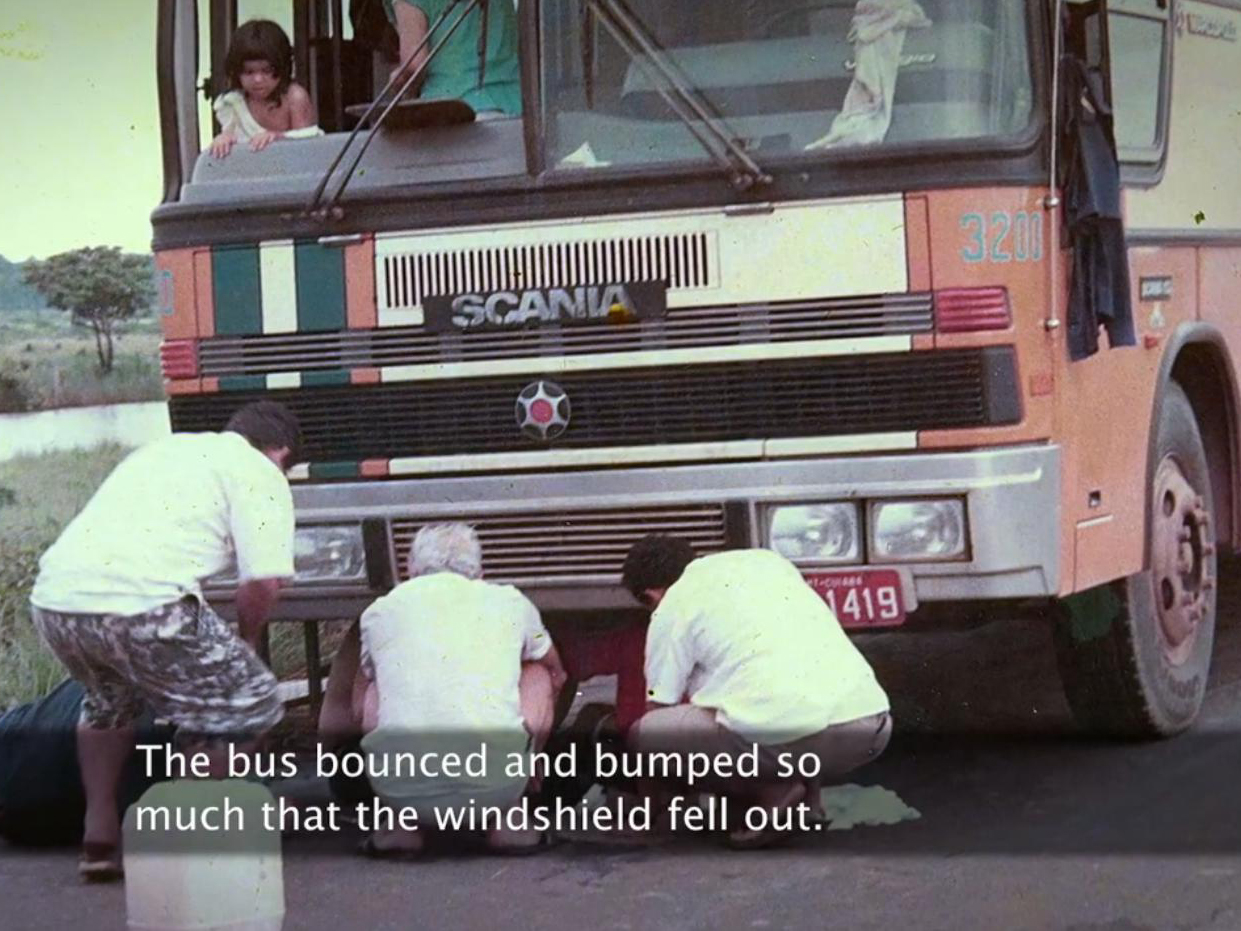
A photo shows the moment after the windshield, due to the roughness of the roads, fell out of the bus carrying Manaus Latter-day Saints to the Sao Paulo Brazil Temple.
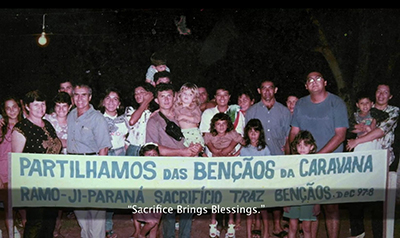
A photo shows Church members in a city along the way who gave support to Latter-day Saints journeying from their home in Manaus to the Sao Paulo Brazil Temple 3,000 miles away.

A view of the Sao Paulo Brazil Temple in the “Sealed Together” video depicts the dramatic moment when Manaus Church members had arrived following their 3,000-mile journey.

In a new Church video, Giselle Mendoca Santos recounts her childhood memories of being on a temple caravan from Manaus to Sao Paulo.
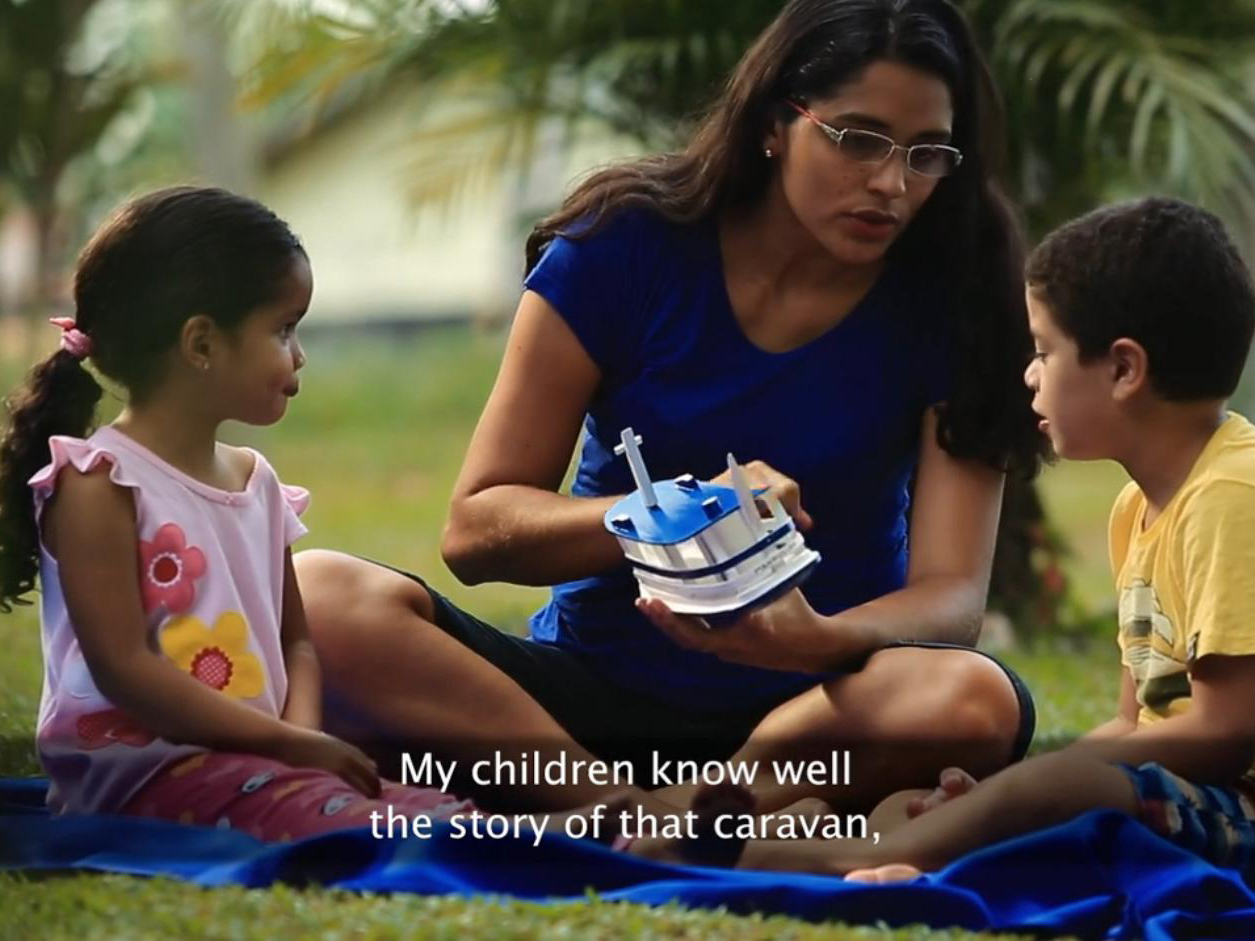
Giselle Mendoca Santos, in a new Church video, “Sealed Together,” says, “My children know well the story of that [temple] caravan.”
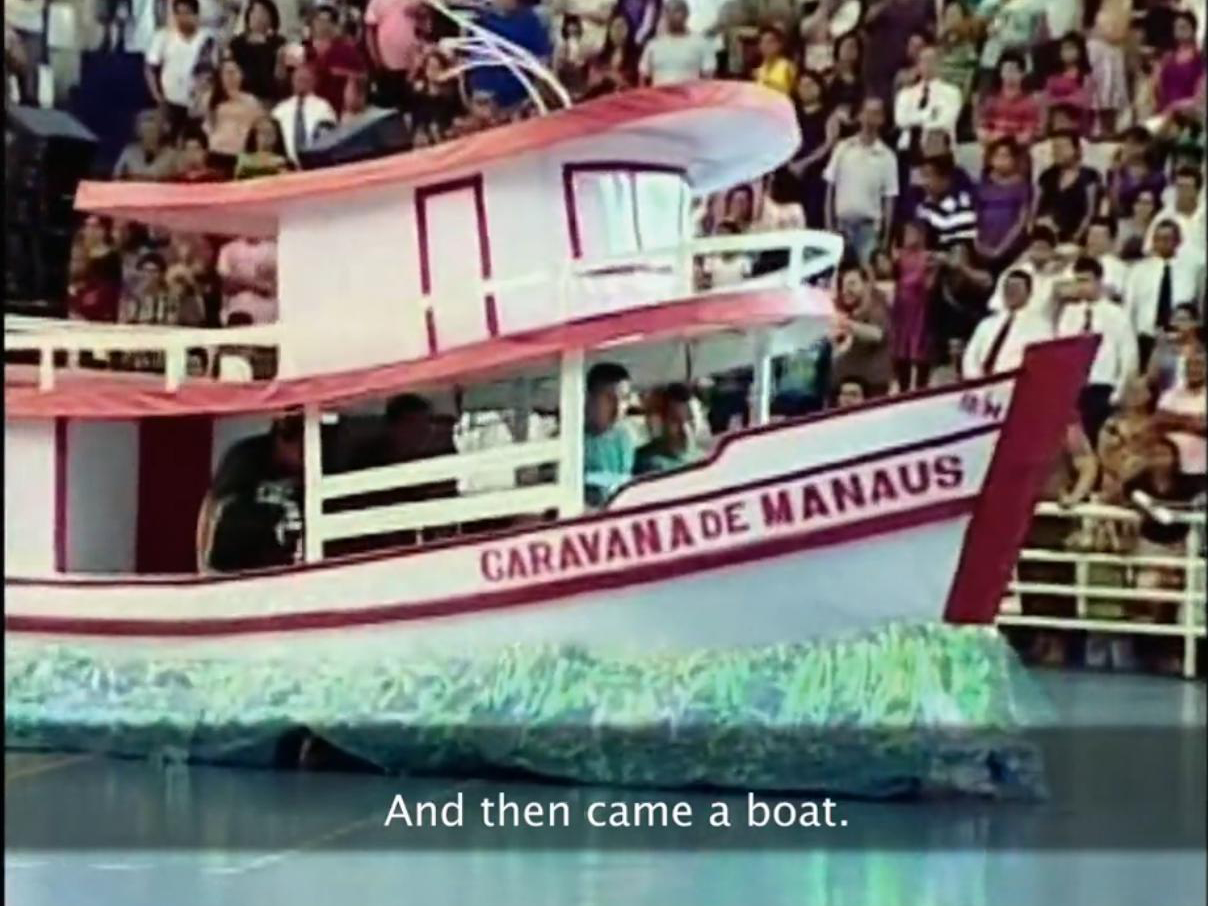
The boat that transported Manaus Latter-day Saints for part of their 3,000-mile journey to the Sao Paulo Brazil Temple is depicted in the cultural celebration prior to the dedication of the temple in Manaus.
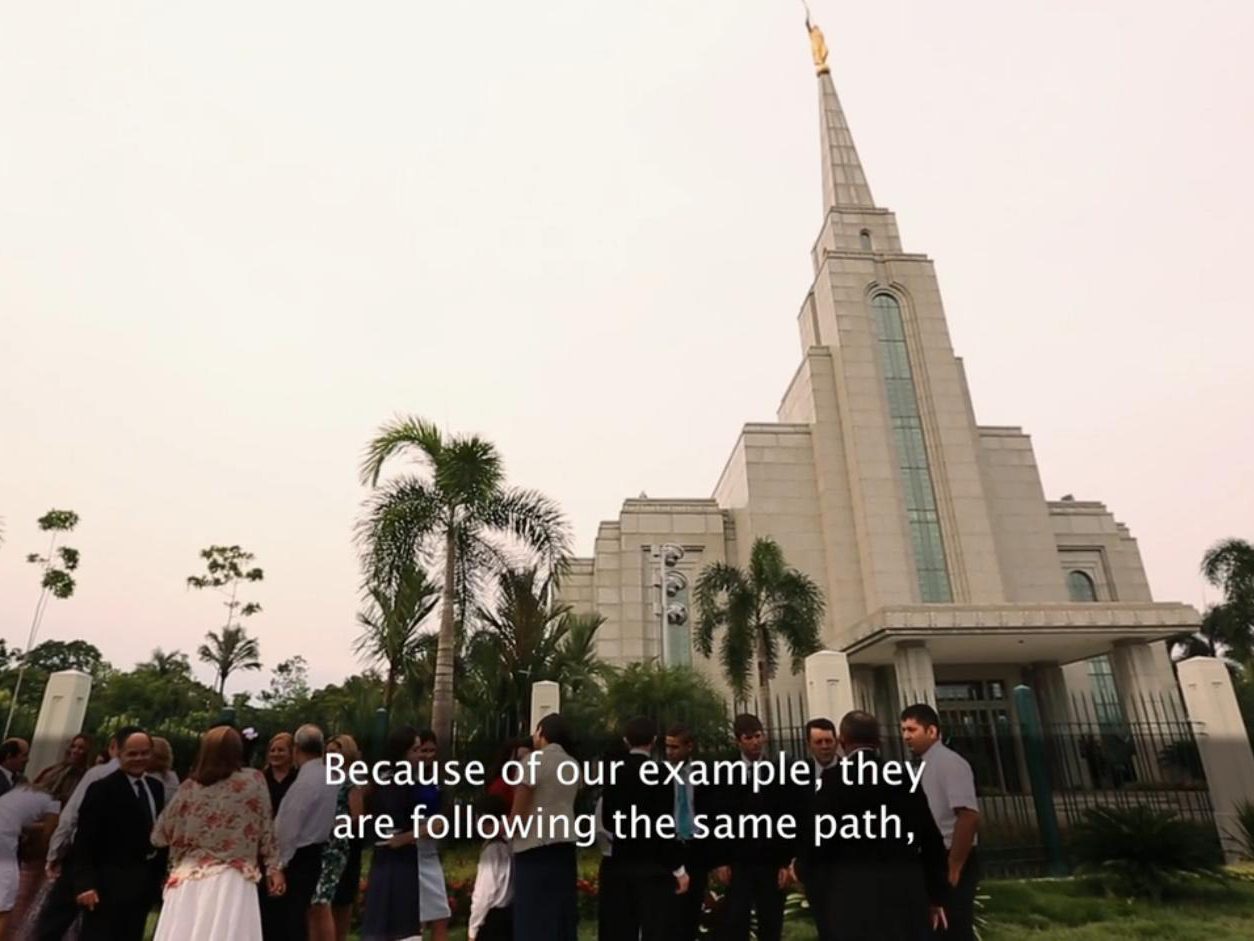
A scene from the new Church video ”Sealed Together“ illustrates that because of the example set by Manaus Church members in going 3,000 miles to the Sao Paulo Brazil Temple, there is now a temple in Manaus.

The establishing scene from the area in Amazonas state of Brazil, where Manaus is located, is included in a new video, ”Sealed Together,” which is in the Church History section of ChurchofJesusChrist.org.
